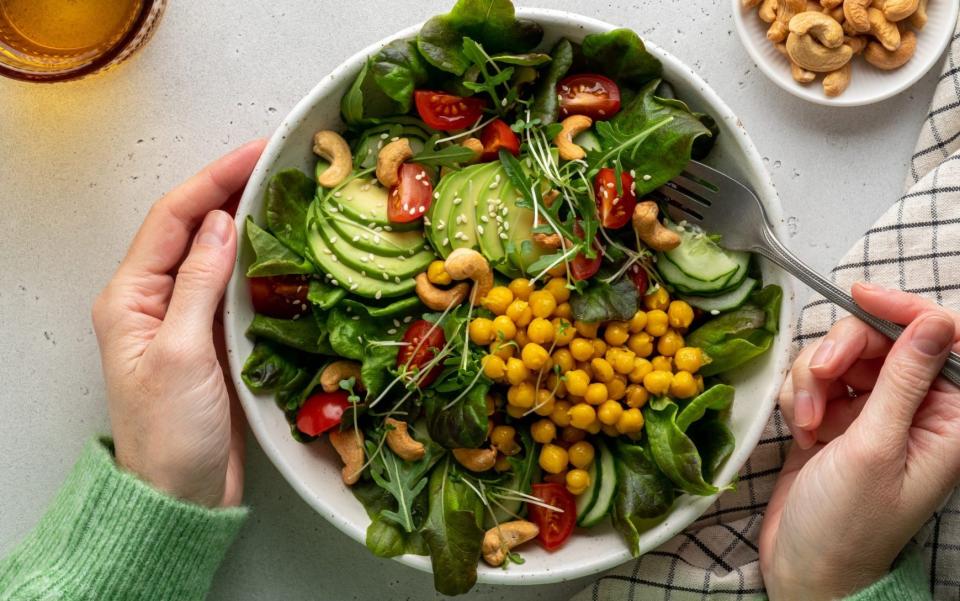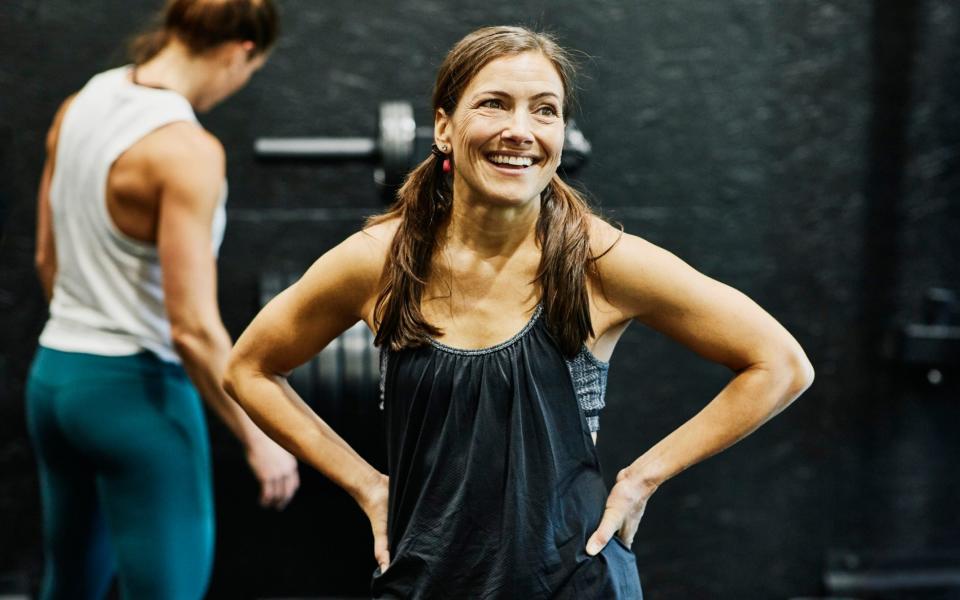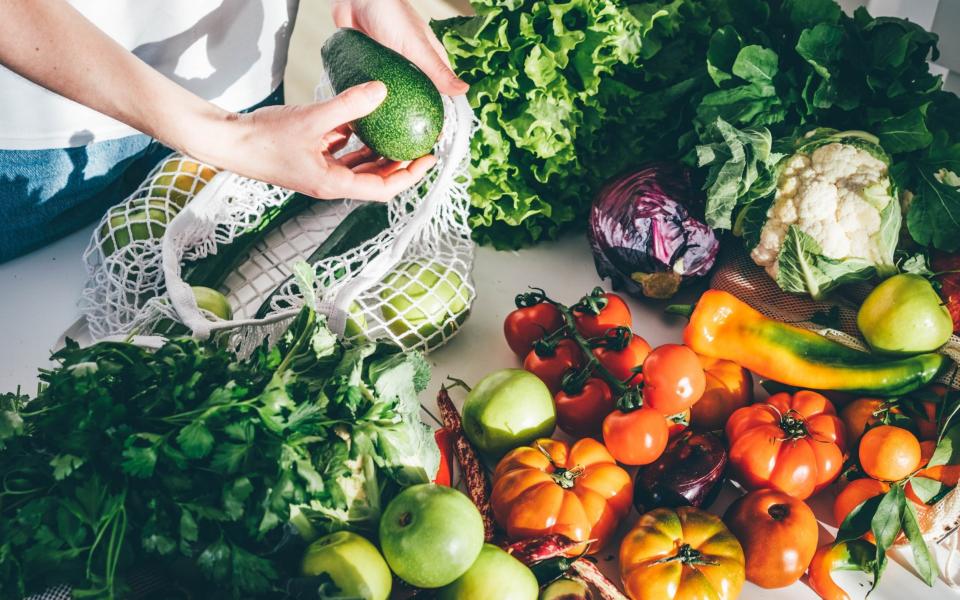How to shift midlife weight gain for good

“Middle-aged spread is a myth!” screamed headlines last year, after a study by an international team of researchers revealed that the body’s metabolism doesn’t actually slow down until we reach our 60s.
But while science might say one thing, millions of people in their 40s and 50s contemplating their own widening waistlines would argue otherwise.
For men, a thicker waist tends to present as a “beer belly”, thought to be because men are more predisposed to visceral fat – fat wrapped around the organs – which pushes the abdomen outwards and feels hard to the touch. Women tend towards all-round thickening, thanks to subcutaneous fat that sits directly under the skin and feels softer.
Either way, as a high waist measurement is correlated with an increased risk of type 2 diabetes and heart disease, it’s something we should all worry about. (Quick tip: if the circumference of your waist is more than half your height, that counts as high.)
But if our rate of metabolism – how fast the body burns calories – can’t be held responsible for a widening waist as we age, what can? And, crucially, is there anything we can do about it?
With the help of experts, we’ve identified five reasons your stomach might be less svelte now than in your youth – and what you can do to regain your waist.
The problem: You have less diversity in your gut bacteria
The role and effect of the bacteria in our gut is at the cutting edge of diet science at the moment, and research is now pointing to the fact that our gut microbiome changes as we get older, says Emma Bardwell, a registered nutritionist and women’s health specialist (emmabardwell.com).
“Diversity of certain species and strains depletes with age, and having low levels of bacteria such as Akkermansia muciniphila has been associated with obesity, diabetes, inflammation and metabolic disorders.”
The Solution
“Focus on diversifying your microflora,” says Bardwell. “Forget expensive probiotic supplements: I’d advise starting to increase the amount of plant fibre in your diet. Research shows an association between increased gut diversity and eating at least 30 different types of plant foods a week – not just fruit and veg; it includes wholegrains, nuts, seeds, herbs and spices.
“Don’t fret too much over numbers, though: aim for a plant-focused diet (it doesn’t have to be vegan, by any stretch) and just try to add in some variety, so you’re not eating the same plant foods each day.”

The problem: You have less muscle mass than you used to
“While last year’s study showed that metabolism doesn’t slow until after the age of 60, what the study didn’t account for is loss of muscle mass,” says nutritionist Emma Bardwell. “We lose 1-2 per cent a year from our 30s onwards. It’s imperceptible perhaps at 35, but by 50 we’re starting to really notice it, especially around the waistline.
“Muscle is metabolically active [meaning it uses up calories], so it plays a role in keeping us in shape; muscle loss – sarcopenia – means a small reduction in metabolism, possibly 100-200 calories a day. This might not sound like a lot, but overconsuming, day in, day out, will lead to weight gain.
“Couple that with the fact that we tend to move less as we get older and you can see the problem.”
The Solution
Keep an eye on your portion sizes and avoid snacking. Yes, your general diet is more important than the fact that the amount of calories going in needs to be equal to, or fewer than, the amount of calories going out to avoid gaining weight.
But, as Bardwell explains: “We’re a nation of snackers. If you eat proper, filling, satiating meals, you’ll keep blood-glucose levels steady and avoid crashes and dips in energy that inevitably leave us reaching for ultra-processed quick energy fixes.”
Just as importantly, try to integrate calorie-burning activity into your day that isn’t organised exercise: take the stairs instead of the lift, walk to the shops, do gardening and housework. And when you do work out, choose exercises that will help build muscle.

The NHS recommends you do at least two muscle-strengthening sessions every week. The more muscle mass you have, the more calories it will burn, but gaining it doesn’t have to mean pumping iron: sit-ups, push-ups, lunges and squats all strengthen muscles, as do yoga, pilates and tai-chi.
The problem: You’re stressed
Of course you are stressed – we’re all stressed – but whether it’s a job, raising children or dealing with elderly parents, stress tends to hit a peak in our middle years.
Chronic levels of stress send the hormone cortisol – associated with fat deposition around the middle – into overdrive, and that can be compounded by self-medication through comfort eating and alcohol.
The Solution
It’s not a revolutionary approach, but it works: if you cannot avoid stress, instead find ways to mitigate its effects. That means making sure you are getting enough sleep, and trying anything else that helps to get your brain back in balance, such as mindfulness, meditation or yoga.

The problem: You’ve hit the menopause
For women, all of the above is compounded by the hormonal shift that happens in middle age. “In menopause, women are dealing with side effects such as poor sleep, bladder weakness and low self-esteem, which can affect appetite and the motivation to exercise,” says women’s health specialist Emma Bardwell.
“That’s because insomnia raises levels of ghrelin and lowers leptin, meaning we’re hungrier and find it harder to feel satiated.”
The decline in oestrogen levels means that women tend to shift from a traditional “pear” shape (nipped in waist and fat stored on the bottom, thighs and breasts) to more of an “apple” shape (rounder through the middle). And, says Bardwell, this drop in oestrogen can also make it hard to shift the pounds.
“Fat cells produce a little oestrogen and as your body wants to hold onto as much oestrogen as it can at this time, it can feel much harder to lose weight.”
The Solution
For many women, HRT, which replaces the hormones that are naturally lost, is a great solution. And when it comes to weight and where fat is stored, it’s certainly effective.
One study found BMI was significantly higher in peri- and post-menopausal women than in those yet to reach menopause, but also discovered that women taking HRT had similar levels of fat and fat distribution to premenopausal women.

While the balance of oestrogen and progesterone is often the focus when dealing with menopause , the balance of another hormone, insulin, is often overlooked, points out Dr Estrelita van Rensburg, founder of health company WellnessEQ (wellnesseq.net) and author of Eat Well or Die Slowly.
“Carbohydrate-rich diets that are typical in the Western world can lead to high levels of insulin and subsequently insulin resistance. And there’s evidence that insulin resistance can exacerbate menopause symptoms, such as fatigue, headaches, brain fog and muscle weakness.”
The problem: Your diet is starting to catch up with you
“Food consists of carbohydrates, proteins and fats, and the body’s hormonal response, specifically the way insulin responds, to each of these is different,” says Dr van Rensburg. “Insulin’s role is to take glucose out of our bloodstream and effectively open the door to our cells so that the glucose can be used to generate energy. And carbohydrates raise insulin levels much more than proteins or fats.”
The issue is that if you’ve been eating a relatively high-carb diet throughout your life, your body will have been running on high levels of insulin and, over time, the cells stop responding: a process known as insulin resistance. But that glucose has to go somewhere, so if the cells won’t take it, the body stores it as fat – generally in and around the abdominal area.
The Solution
Overhaul your diet. It is possible to reverse insulin resistance through a combination of diet, exercise and weight loss – and there are no quick and easy fixes. It’s the same dietary advice you will have heard before: cut out processed foods and avoid simple sugars and starchy carbs.

But don’t worry that you’re going to feel hungry. “Once you start eating good protein and fat, you’ll find it’s very satiating,” says van Rensburg. “It doesn’t drive you to eat more in the way sugar and starch keeps you feeling hungry [because sugar and starch cause blood-sugar peaks and troughs].”

